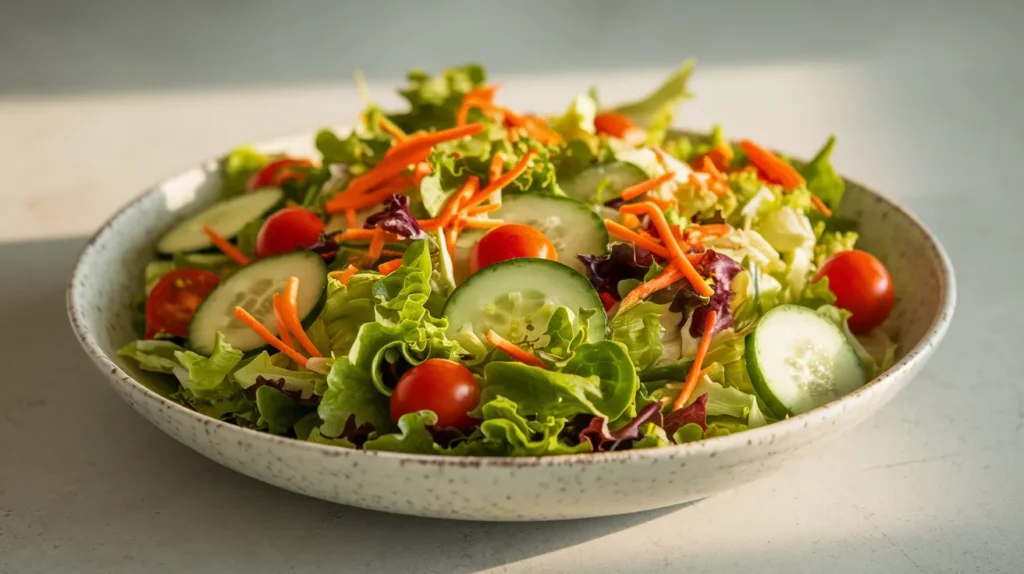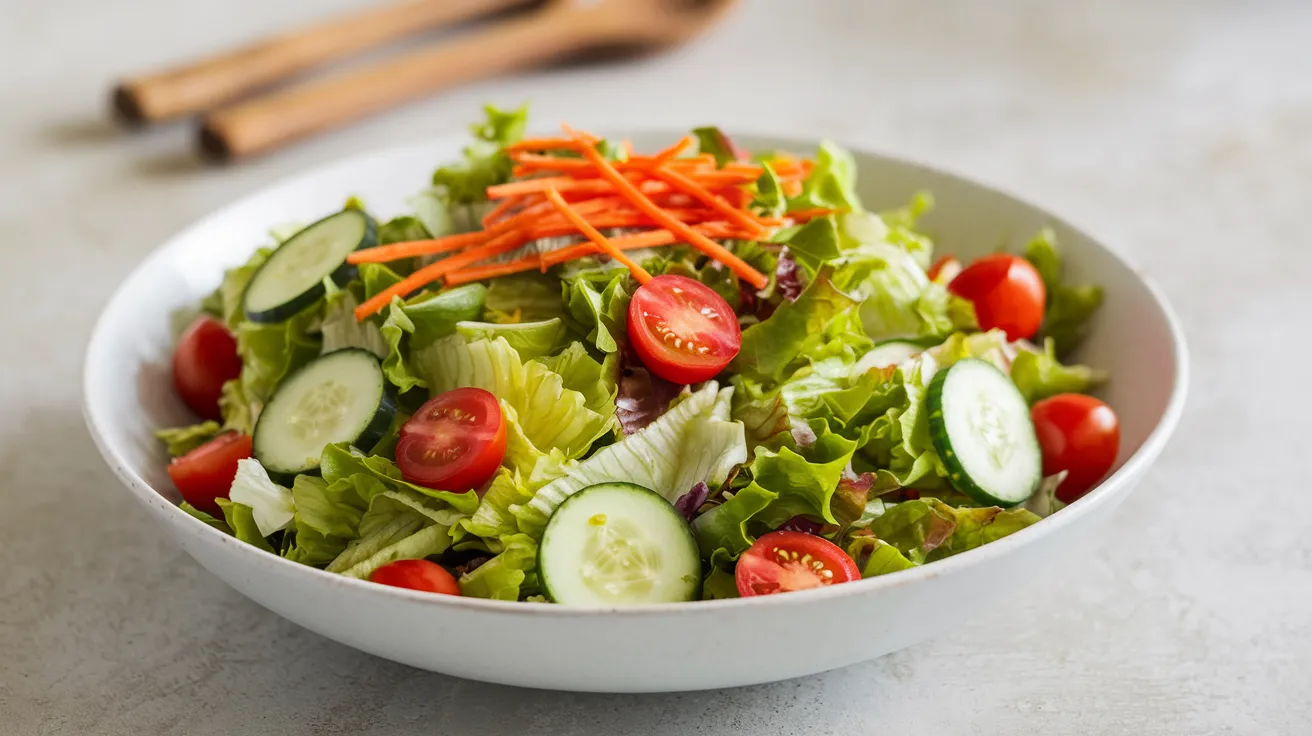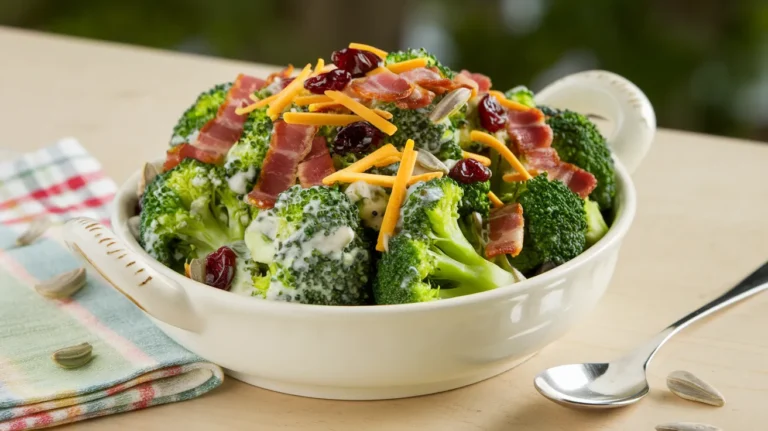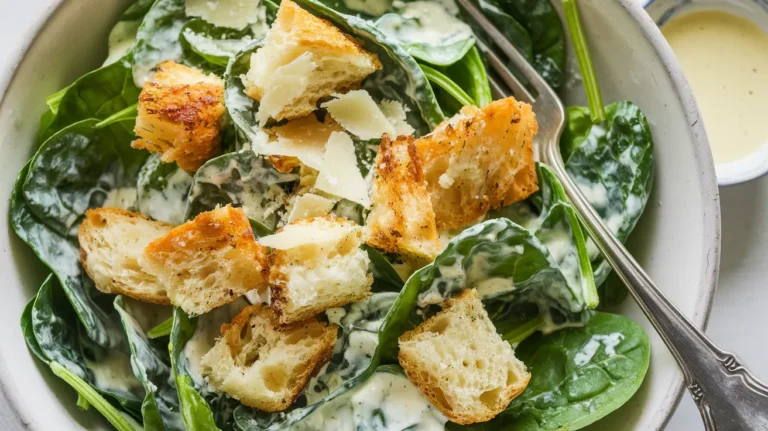Key Takeaways:
- This classic garden salad comes together in just 15 minutes with fresh vegetables
- Perfect for beginners – simple steps with room for creativity
- Stores well for up to 2 days – ideal for meal prep
- Easily customizable for various dietary needs (vegan, gluten-free, keto)
The Perfect Garden Salad Every Time
Ever found yourself staring at your produce drawer, wondering how to turn those fresh vegetables into something worth eating? A garden salad seems simple, but getting the perfect balance of flavors, textures, and that restaurant-quality taste can feel like a mystery.
Good news! This garden salad recipe solves that problem with straightforward steps anyone can follow. You’ll create a colorful, nutritious salad that’s perfect as a side dish or light meal in just 15 minutes.
Let’s turn those vegetables into a vibrant garden salad that’s both beautiful and delicious!
Nutrition Facts
| Nutrient | Amount per Serving | % Daily Value |
|---|---|---|
| Calories | 120 | – |
| Total Fat | 7g | 9% |
| Saturated Fat | 1g | 5% |
| Cholesterol | 0mg | 0% |
| Sodium | 285mg | 12% |
| Total Carbohydrates | 12g | 4% |
| Dietary Fiber | 3g | 11% |
| Sugars | 5g | – |
| Protein | 3g | 6% |
| Vitamin A | – | 25% |
| Vitamin C | – | 45% |
| Calcium | – | 6% |
| Iron | – | 8% |
Percent Daily Values based on a 2,000 calorie diet
What You’ll Need
Ingredients (Serves 4)
| Ingredient | Amount | Notes |
|---|---|---|
| Romaine lettuce | 1 large head | Washed and chopped |
| Cherry tomatoes | 1 cup | Halved |
| Cucumber | 1 medium | Sliced into half-moons |
| Red onion | 1/4 cup | Thinly sliced |
| Bell pepper (red or yellow) | 1 medium | Sliced into strips |
| Carrots | 1 medium | Shredded or julienned |
| Olive oil | 3 tablespoons | Extra virgin recommended |
| White wine vinegar | 1 tablespoon | |
| Lemon juice | 1 tablespoon | Freshly squeezed |
| Dijon mustard | 1 teaspoon | |
| Honey | 1 teaspoon | Optional for sweetness |
| Salt | 1/2 teaspoon | To taste |
| Black pepper | 1/4 teaspoon | Freshly ground |
| Dried herbs (like oregano or basil) | 1/2 teaspoon | Optional |
Kitchen Tools
| Tool | Purpose |
|---|---|
| Large salad bowl | For mixing and serving |
| Cutting board | For chopping vegetables |
| Sharp knife | For cutting vegetables |
| Small mixing bowl | For preparing dressing |
| Whisk | For emulsifying dressing |
| Measuring spoons | For accurate measurements |
| Salad tongs or servers | For serving |
Optional Substitutions
- Lettuce: Swap romaine for mixed greens, spinach, or butter lettuce
- Vegetables: Add or substitute with avocado, radishes, or celery
- Dressing: Use balsamic vinegar instead of white wine vinegar
- Sweetener: Substitute maple syrup or agave for honey (vegan option)
- Add-ins: Croutons, cheese, nuts, or seeds for extra texture and flavor
Step-by-Step Instructions (For Complete Beginners)
Preparation Phase (5 minutes)
- Gather all your ingredients and tools first
- Place all vegetables on the counter
- Take out all measuring tools (cups, spoons)
- Set up your cutting board and knife
- Find a large bowl for the finished salad
- Get a small bowl ready for making the dressing
- Beginner tip: Having everything ready makes the process much easier!
- Prepare your sink area for washing vegetables
- Clear any dishes from the sink
- Have a clean kitchen towel or paper towels ready for drying
- Beginner tip: Make sure your hands are clean before handling food
- Wash all vegetables thoroughly
- Fill a clean sink or large bowl with cold water
- Place romaine lettuce leaves in the water and swish them around
- Lift leaves out of water (don’t pour water out with leaves in it, as dirt will resettle on them)
- Repeat if needed until no dirt remains at bottom of water
- Rinse cherry tomatoes, cucumber, red onion, bell pepper, and carrot under running water
- Beginner tip: For lettuce, look especially at the base of leaves where dirt collects
- Dry the washed vegetables
- Pat dry with clean kitchen towels or paper towels
- For lettuce, a salad spinner works best if you have one
- Beginner warning: Wet vegetables will make your salad soggy and dilute the dressing
Assembly Phase (10 minutes)
- How to properly cut romaine lettuce:
- Place the head of romaine on your cutting board
- Cut off the very bottom (about 1-2 inches) where the core is
- Separate the leaves and rinse them individually, paying attention to dirt that collects at the base
- After washing and drying, stack a few leaves on top of each other
- Cut across the stack to make 1-2 inch strips
- Visual guide: The pieces should be bite-sized, about the size of a standard tortilla chip
- Place cut lettuce in your large salad bowl
- Beginner tip: If your knife isn’t sharp, you can tear the lettuce with your hands instead
- How to prepare cherry tomatoes:
- Place tomatoes on the cutting board
- Hold each tomato gently between your thumb and index finger
- With a sharp knife, carefully cut each tomato in half
- Safety tip: Keep fingertips curled under and away from the knife blade
- Add cut tomatoes to the bowl with lettuce
- Beginner tip: If tomatoes are rolling around, place your knife flat on top and apply gentle pressure to hold them in place before cutting
- How to cut a cucumber:
- Rinse the cucumber under cool water
- Place on cutting board and cut off both ends
- Stand cucumber on one flat end and slice in half lengthwise
- Lay each half flat-side down on the board (this prevents rolling)
- Cut into half-moon slices about 1/4 inch thick
- Add sliced cucumber to the salad bowl
- Beginner tip: For a softer texture and fewer seeds, you can scoop out the seeds with a spoon before slicing
- How to safely cut red onion:
- Cut off the top (not root) end of the onion
- Stand the onion on the flat cut side
- Cut in half from top to root
- Peel off the papery skin
- Lay one half flat-side down on the cutting board
- Make thin slices from one side to the other
- Measure out 1/4 cup and add to salad
- Optional beginner step: To reduce the strong onion flavor, place sliced onions in a bowl of ice water for 5-10 minutes, then drain and pat dry
- Beginner tip: If your eyes water when cutting onions, try refrigerating the onion for 30 minutes before cutting
- How to prepare a bell pepper:
- Rinse the bell pepper under cool water
- Place it on its side on the cutting board
- Cut off the top where the stem is
- Cut off the bottom to create a flat surface
- Stand the pepper on the flat bottom and slice down one side, following the curve of the pepper
- Continue cutting around the center core with the seeds
- Discard the center core with seeds
- Lay each pepper piece flat and cut into thin strips
- Add to the salad bowl
- Beginner tip: The white ribs inside the pepper can be bitter, so remove them with the knife edge if desired
- How to prepare a carrot:
- Rinse the carrot under cool water
- Using a vegetable peeler, remove the outer skin
- For shredded carrot: Use a box grater on the medium holes, holding the carrot at an angle and sliding down
- For julienned carrot: Cut the carrot into 2-inch sections, then slice each section into thin planks, then cut the planks into matchsticks
- Add prepared carrots to the salad bowl
- Beginner tip: Be extra careful when your fingers get close to the grater – stop when there’s still a good-sized piece to hold onto
- How to make a simple salad dressing from scratch:
- Take your small bowl and add 3 tablespoons olive oil
- Add 1 tablespoon white wine vinegar
- Add 1 tablespoon fresh lemon juice (cut a lemon in half and squeeze, removing any seeds)
- Add 1 teaspoon Dijon mustard
- Add 1 teaspoon honey (optional)
- Add 1/2 teaspoon salt
- Add 1/4 teaspoon black pepper
- Add 1/2 teaspoon dried herbs if using
- Use your whisk and whisk vigorously in a circular motion for about 30 seconds until everything is combined
- Beginner tip: The mustard helps the oil and vinegar stay mixed together (called emulsification)
- Taste test: Dip a piece of lettuce in the dressing and taste. If it’s too tart, add a bit more honey. If it’s too bland, add a pinch more salt or a squeeze more lemon juice
Finishing Phase (2 minutes)
- How to properly dress a salad:
- Wait until just before serving to add dressing
- Start with about half the dressing
- Drizzle it around the edge of the bowl, not directly on top of all the vegetables
- Using tongs or two large spoons, gently lift and turn the salad from the bottom up
- Keep tossing until all pieces have a light coating of dressing
- Add more dressing if needed, a little at a time
- Beginner tip: It’s better to under-dress than over-dress; you can always add more, but you can’t take it away!
- How to serve the salad:
- Serve immediately after dressing
- Use tongs or two large spoons to transfer to individual plates
- If serving family-style, leave extra dressing on the side
- Beginner tip: For a nice presentation, reserve a few colorful ingredients like tomatoes to sprinkle on top after tossing

Troubleshooting Tips
| Problem | Solution |
|---|---|
| Soggy lettuce | Make sure to dry lettuce thoroughly after washing. Add dressing just before serving. |
| Bitter dressing | Add a touch more honey or sweetener to balance acidity. |
| Bland salad | Add a pinch more salt or a squeeze of lemon juice to brighten flavors. |
| Wilted vegetables | Refresh in ice water for 5 minutes, then dry before adding to salad. |
| Too much dressing | Add more undressed lettuce or vegetables to balance. |
| Watery dressing | Whisk more vigorously or add a tiny bit more mustard to help emulsify. |
| Vegetables browning | Prepare just before serving or squeeze a little lemon juice on cut surfaces. |
| Uneven dressing distribution | Toss longer and more gently, making sure to lift from the bottom. |
Creative Variations
Mediterranean Garden Salad
- Add 1/2 cup crumbled feta cheese
- Include 1/4 cup kalamata olives
- Sprinkle 2 tablespoons fresh chopped herbs (parsley, dill, mint)
- Add 1/4 cup diced cucumber
Protein-Packed Garden Salad
- Top with 2 cups grilled chicken, salmon, or beans
- Add 2 hard-boiled eggs, sliced
- Include 1/4 cup sunflower or pumpkin seeds
- Increase olive oil in dressing for added satiety
Seasonal Garden Salad
- Spring: Add radishes, asparagus tips, and peas
- Summer: Include corn kernels and fresh basil
- Fall: Add roasted butternut squash and dried cranberries
- Winter: Include roasted beets and walnuts
Storage & Make-Ahead Tips
Storage Time: Up to 2 days for undressed salad.
- Store components separately:
- Keep washed, dried lettuce in a sealed container lined with paper towels.
- Store cut vegetables in separate containers.
- Keep dressing in a sealed jar in the refrigerator for up to 1 week.
- For meal prep:
- Prepare all vegetables and store separately.
- Combine just before serving and add dressing.
- Leftover dressed salad:
- Will last about 4-6 hours before becoming soggy.
- Can be revived somewhat by adding fresh lettuce.
Safety Notes & Tips
- Food Safety: Wash all produce thoroughly to remove dirt and potential bacteria.
- Allergies: Common allergens in this recipe may include mustard. Always check ingredient labels.
- Cutting Safety: Use proper knife technique, keeping fingers curled under when chopping.
- Dietary Notes: This salad is naturally gluten-free, vegetarian, and can be made vegan by omitting honey.
Pro Tips for the Perfect Garden Salad
- Texture Balance: Include something crunchy (like croutons), something creamy (like avocado), and something juicy (like tomatoes).
- Temperature: Chill your salad bowl in the freezer for 10 minutes before assembling for an extra-crisp salad.
- Seasoning: Don’t forget to season the vegetables themselves, not just the dressing.
- Dressing Ratio: The classic ratio is 3 parts oil to 1 part acid for balanced dressing.
- Serving Suggestion: For a beautiful presentation, arrange vegetables in sections on top of the lettuce before tossing at the table.




